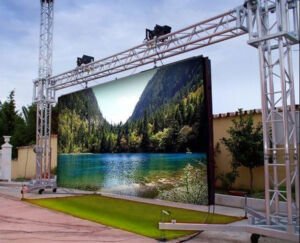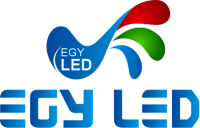5 Minutes to understand LED screen inversion technology

5 Minutes to understand LED screen inversion technology
5 minutes to understand LED screen inversion technology to talk about it clearly, we will address it in several points:
- What is LED flip chip?
- Why is the LED screen inversion technology?
- What are the advantages of LED screen inversion technology?
- LED Display components.
- What is Nit brightness?
What is LED flip chip?
It is the first point of the 5 minutes to understand LED screen inversion technology It is understood that at present, the LED flip chip structure mainly includes three schools: front, reverse and vertical, of which the front structure is the most common one.
Flip packaging technology first appeared in 2007, and was first applied by packaging companies in the field of lighting. The reason why flip chip is called “flip chip” is relative to the traditional wire bonding method and the process after ball planting.
The traditional chip connected to the substrate through metal wire bonding faces up, while the flip chip faces down, which is equivalent to turning the former over, so it is called “flip chip”.
Why is the LED screen inversion technology?
In the field of led display, the LED screen is required to be easy to transport, light and thin, and easy to disassemble.
In order to achieve this goal, the existing technology usually uses to reduce the size of the unit box. However, due to the influence of the external frame, power supply system, and led crystal integrated by the led display screen, the display screen has a graininess, which affects the display effect.
In view of the shortcomings in the above technologies, the utility model provides a led flip screen, which flips and welds the led chip on the circuit board, saves the cost of traditional lamp bead support, gold wire, and chip mounting, improves the production efficiency, and the surface is integrally formed, which is easy to disassemble and splice.
In order to achieve the above purpose, the utility model provides an inverted led display screen. The display screen includes a circuit board, a drive IC and a led chip. The display screen consists of a multi-layer structure. From the bottom to the top, the drive IC, the circuit board, the led chip and the glue or glue are based on this.
What are the advantages of LED screen inversion technology?
One of the most important points of the 5 minutes to understand LED screen inversion technology.
- The active layer is closer to the substrate, shortens the heat flow path from the heat source to the substrate, and has lower thermal resistance.
- Suitable for large current drive, with higher light efficiency;
- Superior reliability can improve product life and reduce product maintenance cost;
- The size can be smaller, and the optics are easier to match.
In fact, in terms of technology alone, the flip LED full-color display has indeed solved many problems.
For example, the flip-chip non-gold wire packaging solves the problems of non-bright and flicker caused by faulty soldering or poor contact of gold wire; Flip chip welding technology improves the heat dissipation ability, improves the stability of the product under high current impact, and improves the product life.
The inverted installation and use process is faster and more convenient to avoid quality problems or hidden dangers caused by installation. Perhaps, with the continuous development of flip chip technology, the flip chip market will become increasingly clear in the near future.
LED Display components:

Outdoor led display – 5 Minutes to understand LED screen inversion technology
One of the most important points of the 5 minutes to understand LED screen inversion technology.
Display screens contain a number of LED called “Module” cells, which are the same panels used in LED and are known as “pixels”.
They are distributed within LED screens evenly and with the same accuracy, and this makes them provide the best possible quality in displaying content and give the best colors and the best possible viewing angle.
The term LED refers to “Light Emitting Diode”, which means the light-emitting diode, and the electric current passes through this LED, to provide the best possible quality.
One of the important advantages offered by the display screens is energy saving, as it is less energy consuming than the previous generations of screens, while maintaining the best possible quality, and works with high efficiency, and therefore it is the most widespread and most used, especially in the means of advertising, as it presents your content with the best possible quality as it works to attract target customers to serve you through its glow, brightness of colors and unique quality.
Display screens depend in their work on the passage of electric current passing through them, because they contain light emitting diodes, and these valves are composed of an anode and a cathode, and they are “anode – cathode” and both are separated at two different ends from each other.
With the connection of the electric current, then the atoms are quickly excited from the anode, as it is the highest in energy, and go to the cathode, which is the lowest in energy.
Thus, fusion of the crystal occurs in one direction, and electricity is connected to it as a whole in the form of a photon, and thus one of the light rays that has a specific frequency and accordingly has a wavelength as well as a specific color emitted by the LED, which explains the multi-color ability of the LED.
What is Nit brightness?
Nit brightness (also known as Nit brightness or Candela brightness) is a unit used to measure the brightness of displays, televisions, projectors, and other devices.
It represents the intensity of light emitted or reflected in an area per square meter. Nit brightness is often used to describe the brightness level of the display device, and is also an important indicator to evaluate the visibility and display effect of the display screen under various environmental conditions.
The higher the nit brightness value, the brighter the display Common TVS and monitors typically have a brightness range of several hundred to thousands of nits. Higher brightness often provides sharper, more vivid, and more attractive image effects, especially in bright environments or when viewing from a distance.
For more information about EGYLED products specifications, click here.
How to measure NIT brightness?
Measuring Nit brightness requires the use of a professional measuring instrument, such as a photometer or colorimeter. These instruments can accurately measure the intensity of the light emitted by the display device and display it in nits.
The following are the general measurement steps:
Prepare the measuring instrument: Ensure that the photometer or colorimeter used meets the requirements and is calibrated. Set display device: Set the display device to the brightness level you want to measure.
You can adjust the brightness Settings or the display mode to achieve the desired brightness. Position the measuring instrument: Position the or colorimeter perpendicular to the surface of the display to ensure that it measures the light source of the display.
Make a measurement: Press the corresponding button on the measuring instrument or trigger the measurement command to start measuring the intensity of the light emitted by the display device. Record measurement results: According to the display of the measuring instrument, record the measured nit brightness value.
How to extend the life of the LED screen
- Provide stable power supply A stable power supply can provide stable voltage, which is not easy to cause local high temperature damage, and ensure the normal operation of the LEDscreen.
- The led bead is the key to affecting the life of the LED film mounting screen When planning a project, certain brands and models of reliable LED, switching power supplies, and other raw materials should be selected.
- Taking heat dissipation as the central work from unit design to project implementation and even system maintenance in the future; reduce LED working current; Configure the LEDs correctly to make each primary LED color attenuate synchronously.
- Outdoor LED screen have a rest time of more than 2 hours every day, and at least once a week in the rainy season Turn on the screen at least once a month and keep it on for more than two hours.
- One of the most important 10 ways to maintain LED display Regularly check whether the anti-corrosion and anti-rust paint has fallen off on the surface of the product and the welding joint of the steel structure. If there is peeling or rust, please spray anti-rust paint or anti-rust paste in time.
- To avoid touching the LED screen, we can choose passive protection and active protection. When cleaning the screen, you should also wipe it as gently as possible to reduce the possibility of injury.
For more information about EGYLED projects, click here.

